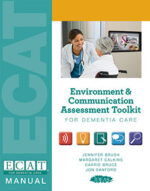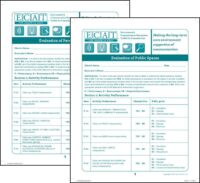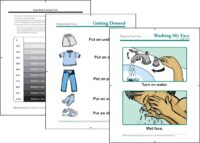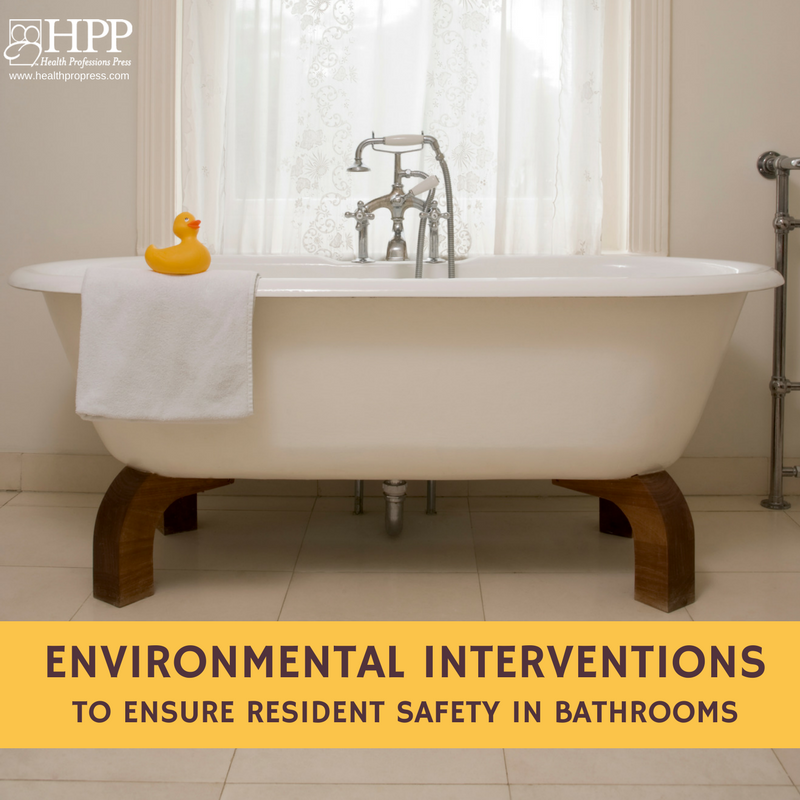The Environment and Communication Assessment Toolkit for Dementia Care (ECAT)
Evidence-based assessment tools and intervention procedures to ensure the highest quality of life for people with dementia
PROVEN ASSESSMENT TO IMPROVE QUALITY OF LIFE
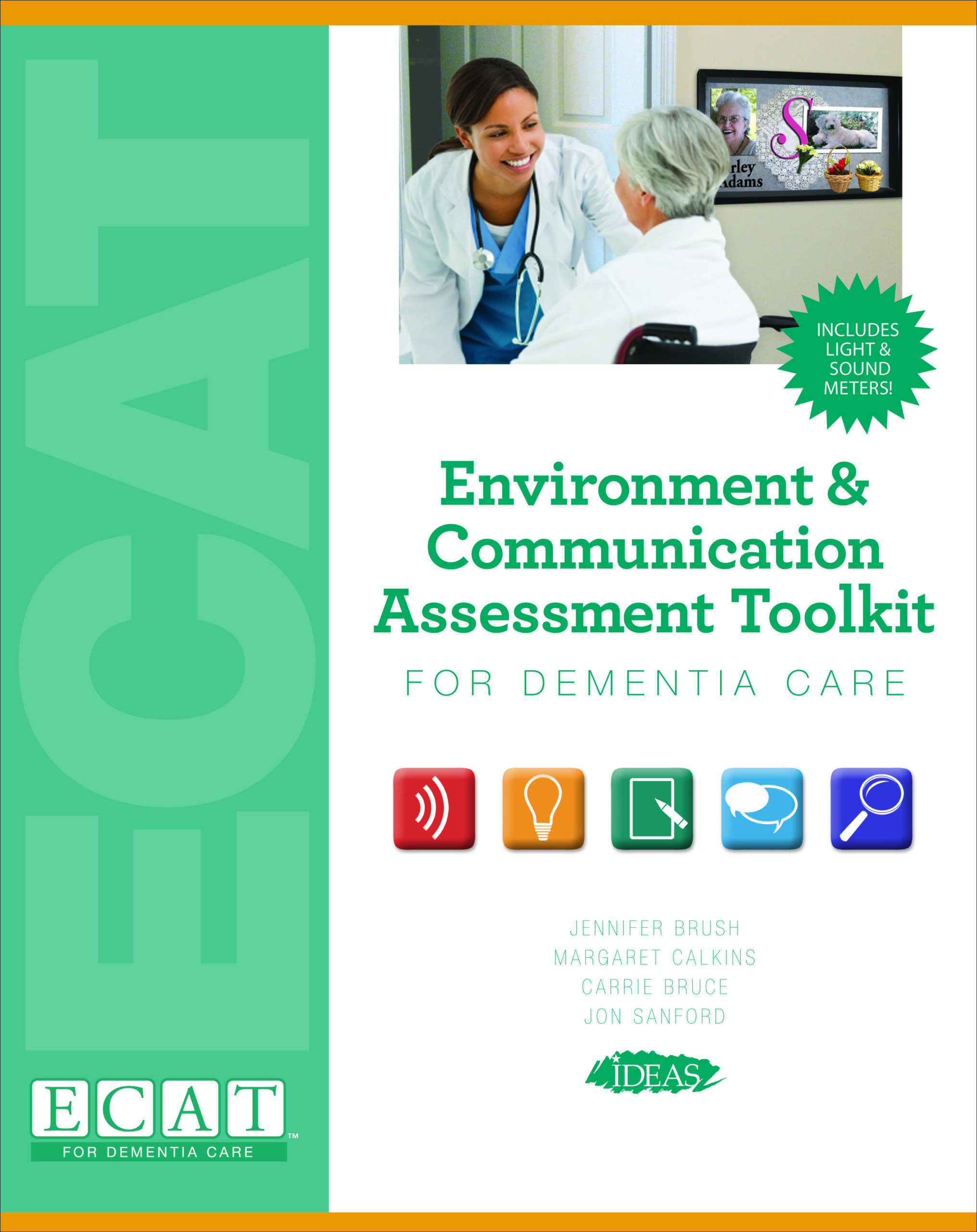 Environment and Communication Assessment Toolkit (ECAT) for Dementia Care
Environment and Communication Assessment Toolkit (ECAT) for Dementia Care
By Jennifer Brush, M.A., CCC-SLP, Margaret Calkins, Ph.D., CAPS, EDAC, Carrie Bruce, M.A., CCC-SLP, ATP, and Jon Sanford, M.Arch.
As communication skills decline in people with dementia, a supportive environment becomes crucial to a resident’s ability to express needs and desires. The Environment & Communication Assessment Toolkit (ECAT) for Dementia Care, is an evidence-based toolkit to help you recognize what physical and social changes will help you improve functioning and communication.
ECAT AT A GLANCE
Where to use: Personal and public spaces in long-term care settings, assisted living, skilled nursing, memory care, and home settings
What is assessed: Visibility, wayfinding and navigation, contrast, sound and high levels, room signage, time/location cues, public restroom, dining room, leisure and social activity areas, and the social environment
Who completes the ECAT: SLPs, OTs, PTs, nurses, social workers, case managers, therapeutic recreation professionals, other dementia care professionals
Time required: 30-60 minutes
Training required: None
Evidence base: Tested across a 3-year development period funded by NIDCD with strong effectiveness outcomes across four measures (clinical knowledge, impact on practice, utility of information, and usability of material)
ECAT developers/advisors: SLPs and architects who specialize in dementia care; an expert technical advisory committee from speech-language pathology, occupational therapy, physical therapy, nursing, and gerontology; clinical review panel of rehabilitation, nursing, and activity professionals working in long-term care communities
HOW ECAT WORKS
The starting point for using the Environment and Communication Assessment Toolkit, the ECAT Manual is a user’s guide, technical manual, and educational resource.
- Details how the environment impacts various aspects of communication for a client with dementia
- Describes step-by-step how to complete the assessments
- Includes appropriate interventions and modifications in handy tables cross-referenced to the assessments
- Includes everything you need to know about lighting (methods, types, fixtures, bulbs, suppliers, and more)
The ECAT Assessment Forms quickly identify environmental barriers that are preventing your residents from participating in activities of daily living, leisure activities, or social communication in both public spaces and their own personal space.
With simple yes/no questions, these forms let you organize, analyze, and translate assessment results into appropriate recommendations for intervention. Each form has three sections: Activity Performance, Environmental Measures, and Recommendations for Intervention.
- 6-page Evaluation of Personal Spaces Assessment Form
- 5-page Evaluation of Public Spaces Assessment Form
25-card pack includes
- 24 full-color sequencing cue cards
- 1 double-sided, one-color, 8.5 x 11 card (Gray Scale Contrast Tool & Type Size Reading Test)
The ECAT Sequencing Cue Cards are color illustrations of common sequences of activities of daily living, including getting dressed, taking a shower, using the toilet, and washing one’s face. The cue cards are supplied as durable, reusable cards.
- ECAT Personal Space Signs: Full-page color drawings of Toilet, Bathroom, and Closet
- Gray Scale Contrast Tool: Card to determine whether signage in a person’s environment has adequate contrast
- Type Size Reading Test: A one-page test to ensure that signage is the right size for the person’s needs
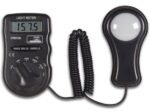
 Sound and Light Meters and CD-ROM
Sound and Light Meters and CD-ROM
The toolkit also includes sound and light meters to assist you in measuring the environment, as well as a CD-ROM with reproducible forms and cards.
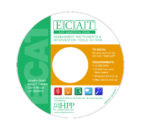
RESULTS OF THE ECAT STUDY
To evaluate the effectiveness of the materials, ECAT was implemented by a diverse group of 63 speech-language pathologists, occupational therapists, physical therapists, and nurses who used the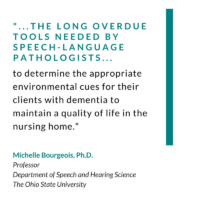 toolkit with their clients for 6 months. The effectiveness of ECAT was measured by four factors:
toolkit with their clients for 6 months. The effectiveness of ECAT was measured by four factors:
Awareness: The increase in awareness of environmental modifications prior to and after ECAT training was highly significant.
Impact: After using ECAT for just five months, the majority of clinicians used 80% of the modifications, and more than half of the clinicians continued to use ECAT on their own as part of their clinical practice after they met the requirements of the study.
Utility: 9 out of 10 clinicians agreed or strongly agreed that ECAT for Dementia Care had useful information, added value to their clinical practice, and benefited their clients.
Usability: Over 90% of clinicians agreed or strongly agreed that the information was easy to understand and that the ECAT was easy to use.
Download a paper showing case studies of the use of ECAT in various settings.
ABOUT THE AUTHORS
Jennifer Brush, M.A., CCC-SLP: Nationally recognized speech-language pathologist, particularly in the areas of memory and swallowing interventions for people with dementia. She is also the author of numerous books.
Margaret P. Calkins, Ph.D., CAPS, EDAC: Widely recognized as an expert in the creation and evaluation of long-term care settings, particularly for people with dementia. She is also widely published in both academic and trade journals.
Carrie Bruce, M.A., CCC-SLP, ATP: Licensed speech-language pathologist and assistive technology practitioner.
Jon Sanford, M.Arch: Associate Professor in the College of Architecture at Georgia Tech and the Director of the Center for Assistive Technology and Environmental Access (CATEA).
PRAISE FOR ECAT
User Reviews
“In one woman’s bathroom, we added contrasting colors … Prior to this $10 modification of buying new towels and using blue paper, she would use her hand towel for toileting hygiene AND wiping her hands and face. It was a HUGE hygiene issue. Now she demonstrates great hygiene without cuing! SUCCESS!”
“One patient … began struggling more with pathfinding to her apartment … I took her shopping on an activities outing and had her pick out the color of flowers she would like to hang … [Now] she can independently recall what color to look for when asked. It has definitely increased her success with pathfinding, especially since she picked a color that is meaningful to her.”
“A patient was eating in his room, as he was unable to distinguish between jeans and slacks [no jeans are allowed in our dining room]. Re-arranging his closet with sections for day and for evening attire allowed him to dress appropriately and go to the dining room in the evening. It made a positive impact on his psychosocial wellbeing.”
PURCHASE ECAT
Environment & Communication Assessment Toolkit (ECAT) for Dementia Care
Boxed set contains:
- ECAT Manual*
- ECAT Cue Card Pack*
- ECAT Assessment Forms*
- CD-ROM (of reproducible forms and cards)
- Light and sound meters
*Also sold separately
$345.00
Stock #29852 | ISBN 978-1-932529-85-2 | © 2012
ECAT is also available for purchase without meters.


